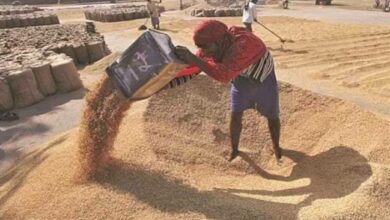COVID-19: Recovering your sense of smell after a coronavirus infection

The loss of smell and taste, also known as anosmia, is frequently the first sign of COVID-19 infection. For some people, this was the only indication that the virus had entered their system. Being unable to smell or taste can be distressing, especially if it lasts for an extended period of time.
Taste usually returns sooner, whereas smell may take longer. So, if you’ve recovered from COVID-19 but still can’t smell anything, here’s what you need to know.
What exactly is loss of smell and taste
It’s not uncommon for people to lose their sense of smell after a viral respiratory infection. A runny nose and other nasal symptoms are common after a viral infection. However, this is not the case with COVID-19, in which the loss of smell and taste is frequently the first symptom. The COVID-19 virus has the ability to quickly attach to the nervous system. The virus easily travels up the nose and attaches itself to the olfactory nerve, which is located at the tip of the nose and transmits sensory information about the smell to the brain.
People can usually distinguish between sweet, sour, bitter, and savory tastes, but if you can’t smell, you won’t be able to tell the difference between a grape and a cherry, as they’re both sweet.
How to get back smell and taste after COVID-19
Several studies have suggested that repeated short-term exposure to smell can help people whose olfactory perception has been damaged as a result of a viral infection recover more quickly.
95 percent of patients regain their sense of smell within six months, according to a study published in the Journal of Internal Medicine.
The SARS-CoV 2 virus is unlikely to cause permanent damage to olfactory neural circuits in most patients, resulting in persistent anosmia.
On the internet, there are numerous videos of people attempting to stimulate their sense of taste by eating burnt oranges and biting into onions like apples. This may appear absurd, but it works.
These exercises work in the same way that olfactory training does. Olfactory training makes use of the body’s neuroplasticity, or ability to create new nerve pathways. The techniques assist the body in forming new neural pathways and regaining a sense of smell.
Also helpful are alpha-lipoic acid, vitamin A supplements, and over-the-counter steroid nasal sprays. Olfactory training is simple to do at home and has no negative consequences. It aids in the reactivation of olfactory fibers.
What can you do?
You can begin smelling commonplace items in the house. Start by smelling coffee, perfumes, nutmeg, coconut, vanilla, mint, clove, eucalyptus, citrus, or various essential oils. You can move on to new scents once you’ve identified these.
Recovery time
The time it takes to recover varies from person to person. Some people recover in a matter of days, while others may take months. People who lose their sense of smell after taking COVID may experience parosmia, a condition in which their sense of smell returns but things smell very bad to them.






